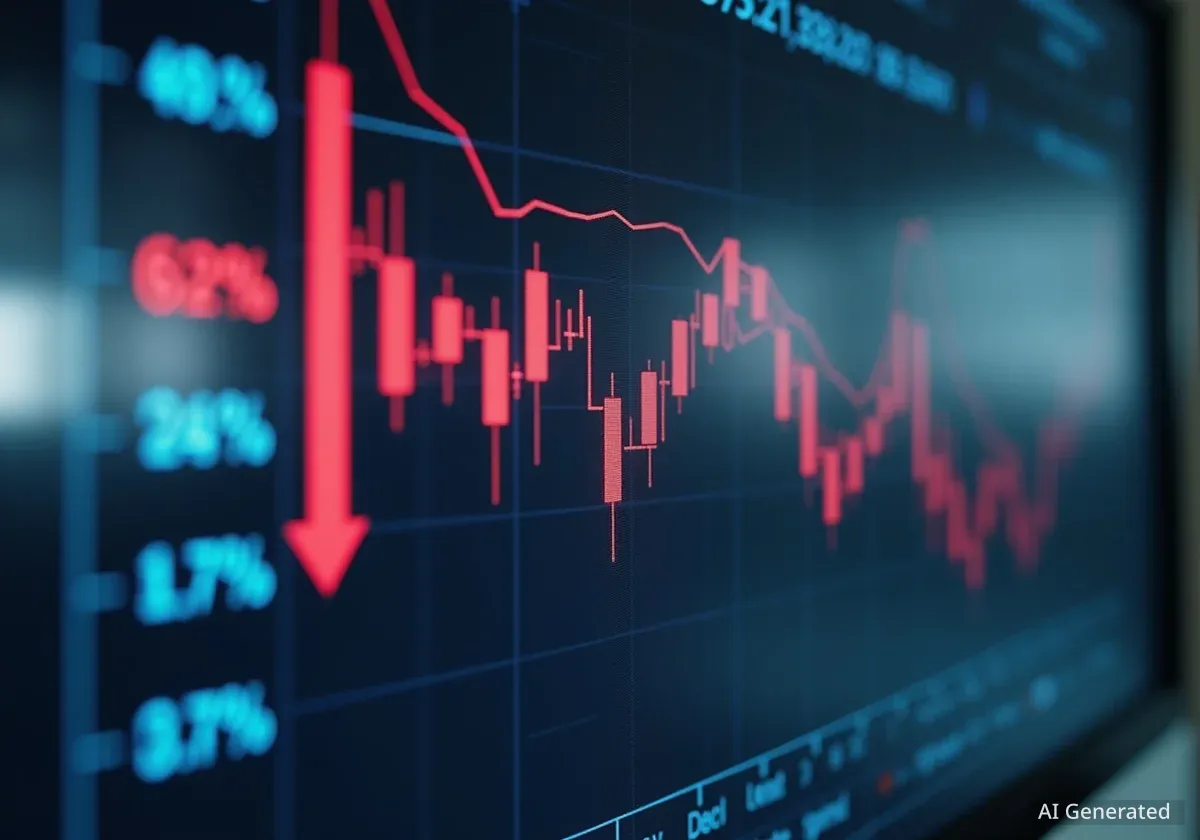Recent discussions surrounding potential interest rate cuts by the U.S. Federal Reserve have sparked significant debate among investors about the possible effects on the cryptocurrency market. A shift in monetary policy, particularly a reduction in borrowing costs, often encourages investment in higher-risk assets, a category that includes digital currencies.
Analysts are closely watching how such a move could influence leading altcoins, including Ethereum (ETH), XRP, Solana (SOL), Cardano (ADA), Dogecoin (DOGE), and Shiba Inu (SHIB). The core idea is that lower interest rates can make traditional savings accounts less appealing, pushing capital toward assets with the potential for higher returns.
Key Takeaways
- Federal Reserve interest rate cuts can stimulate investment in high-risk assets like cryptocurrencies by lowering the returns on safer investments like savings accounts.
- A dovish monetary policy often creates a "risk-on" environment, where investors are more willing to allocate capital to volatile markets.
- Altcoins such as Ether, XRP, Solana, and Cardano may experience increased investor interest as capital flows into the broader digital asset ecosystem.
- While rate cuts can be a positive catalyst, the crypto market remains influenced by other factors including regulation, technology adoption, and overall market sentiment.
Understanding the Link Between Interest Rates and Crypto
The Federal Reserve's decisions on interest rates are a cornerstone of U.S. monetary policy, designed to manage inflation and stabilize the economy. When the Fed cuts rates, it becomes cheaper for businesses and consumers to borrow money. This action is intended to stimulate economic activity.
For investors, lower interest rates on traditional financial products, like bonds and savings accounts, mean lower returns. This environment often leads them to search for better yields elsewhere. Assets perceived as higher risk but with higher potential returns, such as stocks and cryptocurntroduces a new dynamic into the financial system, encouraging investors to seek higher returns in assets beyond traditional savings vehicles.
What is a 'Risk-On' Environment?
A "risk-on" environment describes a period when investors have a high appetite for risk. They are more willing to invest in assets with higher volatility and potential for significant gains, such as tech stocks, emerging market equities, and cryptocurrencies. This sentiment is often driven by positive economic indicators or accommodating monetary policies, like interest rate cuts.
This shift in investor behavior is not unique to cryptocurrency. Historically, lower interest rate periods have corresponded with bull markets in equities. The digital asset market, being one of the newest and most volatile asset classes, is particularly sensitive to these macroeconomic shifts.
Potential Impact on Leading Altcoins
While Bitcoin often leads the charge during crypto market rallies, a surge of capital into the sector frequently benefits altcoins as well. Investors who feel they may have missed the initial gains in Bitcoin often look to other digital assets for growth opportunities. Several major altcoins are positioned to attract this secondary wave of investment.
Ethereum (ETH) and Major Layer-1s
Ethereum, as the largest blockchain for decentralized applications (dApps), is a primary beneficiary of increased market activity. Lower borrowing costs can fuel development and investment in DeFi, NFTs, and other projects built on its network.
Similarly, other prominent Layer-1 blockchains like Solana (SOL) and Cardano (ADA) could see significant inflows. These platforms compete with Ethereum and attract investors looking for the "next big thing" in smart contract technology. A risk-on environment often accelerates this search for innovation.
XRP, Dogecoin, and Shiba Inu
Other tokens also stand to gain. XRP, with its focus on cross-border payments, appeals to a different segment of the market. Positive sentiment can reignite interest in its utility and potential for adoption.
Meme Coins and Market Sentiment
Meme coins like Dogecoin (DOGE) and Shiba Inu (SHIB) are highly sensitive to overall market sentiment. Their value is driven more by community engagement and speculative interest than by fundamental technology. In a market flush with liquidity from rate cuts, these high-beta assets could experience dramatic price movements.
These assets thrive on narrative and speculation, which are amplified when excess capital is searching for high-return opportunities. A favorable macroeconomic backdrop provided by the Fed could provide the fuel for significant rallies in these tokens.
Historical Context and Analyst Perspectives
Looking back at previous cycles can offer clues, though the crypto market is still young and has not experienced many periods of sustained monetary policy shifts. The bull market of 2020-2021 occurred during a time of near-zero interest rates and significant fiscal stimulus, which injected massive liquidity into the global financial system.
"Accommodative monetary policy has historically been a strong tailwind for risk assets. As institutional and retail investors re-evaluate their portfolios in a lower-yield world, a portion of that capital naturally finds its way into emerging asset classes like digital currencies," stated a recent market analysis from a leading financial publication.
According to a report from Barron's, there is a noted correlation between easier monetary conditions and positive performance in the altcoin market. When the cost of capital is low, speculative investments become more attractive, driving funds away from safer, low-yield government bonds and into markets like crypto.
This effect is often magnified in altcoins compared to Bitcoin. Because they have smaller market capitalizations, a smaller amount of new capital can have a much larger impact on their price. This makes them attractive to traders seeking outsized returns during a bull cycle.
Risks and Considerations for Investors
Despite the potential for a rally, investors should remain aware of the significant risks involved. The relationship between interest rates and crypto prices is not a guarantee. Other factors can easily override the influence of monetary policy.
Several key risks include:
- Regulatory Uncertainty: Government actions and new regulations remain one of the biggest threats to the crypto market. A sudden crackdown or unfavorable ruling in a key jurisdiction could quickly erase any gains.
- Persistent Inflation: If the Fed cuts rates but inflation remains stubbornly high, it could damage the economy and investor confidence, leading to a flight to safety rather than a risk-on rally.
- Market Volatility: Cryptocurrencies are inherently volatile. The same factors that can lead to rapid gains can also cause steep and sudden losses.
- Technological Risks: Hacks, exploits, and network failures can undermine confidence in specific projects or the market as a whole.
Ultimately, while a Federal Reserve rate cut could act as a powerful catalyst for the next altcoin boom, it is just one piece of a complex puzzle. Investors should approach the market with a clear understanding of both the potential rewards and the substantial risks involved.





